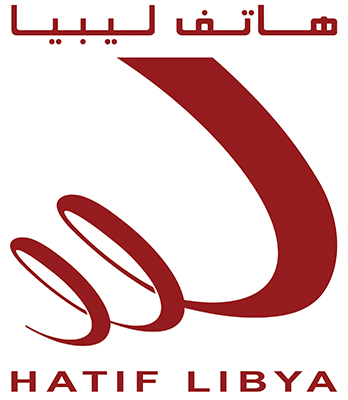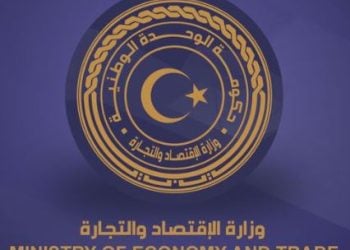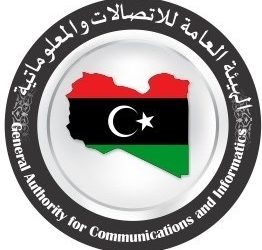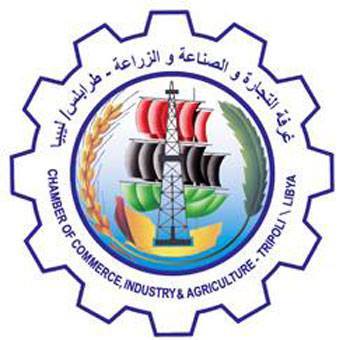The widely known secret of the spat between the Tripoli based Libyan prime minister, Abd Alhamid Aldabaiba, and the Central Bank of Libya Governor, Saddek El-Kaber, spilt out into the open last Monday (26 February) when the later decided to publish a seven-point open letter to the former.
El-Kaber decided to use comments in Aldabaiba’s February 17 Revolution celebration speech as his launch pad. Aldabaiba had touched upon the country’s current financial conditions, the exchange rate, and salary increases.
Recent economic strains
The government was late in paying the January and February state sector salaries. Queues at banks reappeared as the liquidity crises re-emerged. And most politically sensitive, the black-market exchange rate for hard currencies spiked over the last few weeks as the El-Kaber-Aldabaiba spat became public knowledge and the Petroleum Facilities Guards (PFG) threatened oil closures. This was reflected on an almost daily basis in a fall in the dinar’s value against major currencies as the CBL was unable to meet the demand for hard currency.
The blame game
With economic strains, the social and traditional media blame game started. Both the PM and CBL Governor were keen to lay the blame at the other. With his eye on participating in any future elections, Aldabaiba pre-empted with his February 17 speech, leaving El-Kaber no choice but to provide a comprehensive financial and monetary response.
El-Kaber responds to Aldabaiba’s speech
In response to Aldabaiba’s speech, El-Kaber highlighted the government’s unsustainable and mismanaged inflated expenditure, including on runaway state-sector salaries and subsidies. All of these at the expense of reserves and future generations. Continuing with the same financial policies, El-Kaber said, will result in a certain deficit and put Libya at the mercy of international loan sharks. This, he added, would threaten Libya’s sovereignty.
Through a five-point proposal, he called on all of Libya’s institutions to work together to stop the unchecked eastern Libyan government’s ‘‘parallel spending from unknown sources’’ and approve a unified budget for the entire Libyan territory. This includes the rationalization of spending in a way that preserves reserves.
He called on the diversification sources of income by enhancing the role of the private sector. He also called on the increase of oil production – which despite a huge, extraordinary budget, the NOC has failed to do. He also called on the strategic prioritisation of government spending.
In his letter, the CBL Governor said he considered the points raised in Aldabaiba’s speech ‘‘sensitive points, and since the Central Bank of Libya is the economic advisor to the state in accordance with the legislation in force, it has become obligatory for it to draw your (Aldabaiba’s) attention to the following:
Good sustainable management of financial resources
First: I do not disagree with you that Libyans have the right to live a decent life and to receive salaries that guarantee a decent living, but this can only be achieved through good management of financial resources, while ensuring the sustainability of that decent life.
Second: It is no secret to you that oil is the only source of income in the Libyan state, which finances the public budget by more than 95%.
Ill-considered expansion of the public expenditure
Third: You referred to the desire for the price of the dollar to be 1.3 dinars to the dollar, but the desire alone is not enough to achieve this, as the actual practices of successive governments were the opposite of that. The ill-considered expansion of the public expenditure over the past years, especially consumer consumption, which accounts for more than 95% of public spending.
State sector salaries alone represents 60% of public spending. The salaries section (of the budget) jumped from 33 billion dinars in 2021 to 65 billion in 2023. The subsidies section rose from 20.8 billion in 2021, including fuel subsidies, to 61 billion in 2022. It is expected that it will exceed 61 billion dinars in the year 2023, including 41 billion dinars for fuel subsidies, which has grown remarkably and depletes approximately 8.5 billion dollars annually. Not to mention the other subsidy expenses directed directly to the electricity sector at a value of 40 billion dinars, bringing the total direct and indirect subsidy expenses to 102 billion dinars annually.
Imbalance, distortion, and mismanagement in fuel subsidies
One wonders how Chapter Four expenditures jumped from 20.8 billion dinars, including Hydrocarbon subsidies in 2021, to 61 billion dinars in 2022. This confirms the existence of an imbalance, distortion, and mismanagement in fuel subsidies. From 2021 until the end of 2023, the state spent approximately 420 billion dinars, most of which was directed to consumer expenditures at the expense of development spending. It generated pressure on the exchange rate of the Libyan dinar.
Short term increased spending unsustainable at expense of future generations
Fourth: In your speech, you referred to increasing salaries and providing more benefits. Expanding spending may satisfy some groups in the short term. But it contradicts the principles of financial sustainability and ensuring the rights of future generations, which is what rational management of public funds requires.
From where will the government provide financing for its desired spending increases?
Our question is: from where will the government provide financing for these increases. This is especially considering the decline in the volume of expected revenues for 2024, to the level of 115 billion dinars according to the estimates of the National Oil Corporation, and 5 billion dinars in other sovereign revenues, with a total of 120 billion dinars.
Continuing with the same financial policies will result in a certain deficit
Continuing with the same financial policies will increase the complexity of the matter and result in a certain deficit. This requires working together to take policies to avoid financing through loans.
Fifth: The expansion of the parallel expenditure of unknown origin, which directly ordered an increase in demand for foreign exchange in the last months of 2023, resulting in an increase in the parallel (black-market) exchange rate despite the pumping of $5 billion more than in 2022.
Sixth: The move from the exchange rate of 1.3 dinars to the dollar to 4.85 dinars to the dollar was not an option for the Central Bank, but rather was the result of successive crises since 2013, due to the arbitrary closure of oil, which caused the Libyan state a loss of about 150 billion dollars, accompanied by a defect in financial and trade policies and a state of political, institutional division, and growing pace of public expenditure and the adoption of a deficit financing policy lead to an increase in public debt and a worsening of the deficit in the balance of payments, which spent a large portion of the state’s foreign exchange reserves. There was no choice to creating balance and preserving the remainder of the first line of defence, foreign exchange reserves, except by reducing the value of the Libyan dinar against foreign currencies.
Devaluation achieved stability
This step achieved its goals and created clear stability during the years 2021 and 2022 at the macroeconomic level, balance in the general budget and balance of payments, and stability in the dinar exchange rate. However, the government’s continued increase in the level of the public spending significantly, reaching the level of 165 billion dinars in 2023, and the existence of a parallel expenditure of unknown origin, all of which contributed to the increase in the volume of demand for foreign exchange. This despite the Central Bank increasing the volume of supply of foreign exchange by 5 billion dollars compared to 2022, which amounted to 16 billion dollars. This was accompanied by stability in demand and the parallel exchange rate, compared to the amount of 21 billion dollars during the year 2023, and accompanied by an increase in demand and an increase in the exchange rate since the fourth quarter of the year 2023.
Note that the increase in demand for foreign exchange began in the last quarter of 2023, which made it difficult for the Central Bank to defend the current exchange rate of 4.85 dinars to the dollar.
Deficit, debt and international loans would undermine Libya’s sovereignty
So how can the exchange rate be 1.3 dinars to the dollar, according to your statement, in light of these data, the most important of which is the volume of public and parallel spending? And the size of the money supply, which reached 160 billion dinars, except by depleting the Central Bank’s reserves and resorting to loans from international institutions, which is not an easy matter, undermining the state’s sovereignty and stability.
Five-point reform proposal
Seventh: The Central Bank of Libya, based on its national duty and responsibility before the nation and the citizen, will work to preserve the financial sustainability of the state in every possible way, whether individually or in cooperation with the rest of the state institutions. We call on everyone to work together and approve the necessary economic and financial policies to get out of this frightening crisis, through:
(1) Stop parallel spending from unknown sources, and approve a unified budget for the entire Libyan territory.
(2) Rationalizing spending in a way that preserves the state’s reserves and the rights of future generations.
(3) Diversifying sources of income, enhancing the role of the private sector, and reducing dependence on imports of consumer goods, which exceeded 80 percent.
(4) Increasing oil production and exports in the short and medium term.
(5) The priority of spending should be investment in comprehensive development.
In conclusion, these fundamental facts must be stated, and as a matter of bearing historical responsibility and fulfilling the trust, the matter necessitates the necessity of working hard to get out of the crisis and reach the decent and sustainable life that we all aspire to.’’









